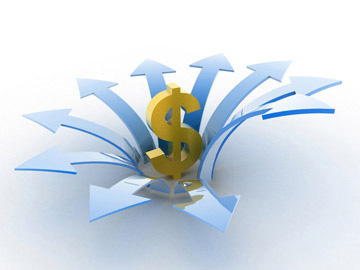Cash Flow Statement Analysis
Cash flow statement analysis gives investor the information of "true" profit, because it relies on real cash transactions in the time they occur, which is different to revenues and expenses.
Cash flow statement analysis will show you, how much money was earned and spent by a company in a specific time, usually a quarter or a year. One would say it reveals the same information as income statement, but there is an important difference among them related to accrual accounting. Revenues and expenses in income statement are booked when they occur, which is in most cases not the same point of time as cash changes hands. On the other side, income statement includes some revenues and expenses, which are not booked in cash flow statement.
To simplify cash flow statement analysis understanding, you can think of final net cash from operations as the "true" company's profit, while the net profit reported in the income statement doesn't necessary mean any increase in the balance sheet at the end of the accounting period.
You as investor should be specifically careful analyzing cash flow statements when picking candidates for potential investment. By looking only the income statement you could be mislead by the figures reporting net profit, while company could suffer its business because of insufficient cash flows, which can result in insolvency as worst case scenario. Cash flow statement analysis will give you a much better sense of how successful the company's business really is.
Analyzing The Three Most Important Sections of Cash Flow Statement
As any other financial report we have examined so far, also cash flow statement can be divided in three important sections: cash flow from operating activities representing how the company earns cash, financing and investing, which basically represents how the company spends its cash.
Cash Flow From Operating Activities

This section of cash flow statement analysis is related to the cash that comes in from sales of the company's goods and services minus the cash spent for producing its selling products. You should look for those companies which are producing positive cash flow from operations. Of course, there is a difference between companies among industries; for example the high tech and IT sector is known to produce negative cash flow from operations in the earlier stages of company's growth.
Figures from cash flow statement are often used as a preview signal of the future net income. Interesting information for investors is the dynamic of the gap between cash flow from operations and net income for the last few periods. Widening or narrowing gap is signaling speeding or slowing cost bookings.
Cash Flow From Investing Activities
Capital expenditures are related to new equipment and other investment related with company's ongoing primary business. Acquisitions and investments on financial markets are also part of this section of cash flow statement.
One of the most important parts of analyzing investing figures is to compare depreciation and re-invested capital in ongoing business in a specific period. Re-investments should be at least equal (preferable higher) than depreciation, since artificially high cash inflows are not sustainable over a longer period of time.
Cash Flow From Financing Activities
Outside financing activities can be related to cash inflows out of primary (new emission) stocks of bonds selling or of additional borrowings submitted by banks on one side, while cash outflows can represent paying back a bank loan, dividend payments or buying back its own common stocks.
Figure to Watch - Free Cash Flow (FCF)
Free cash flow is representing the excess cash produced by the company. Investors look for buying candidates with plenty of free cash flow, because these companies have no problem to invest in the future growth of the business, to pay debts and dividends, and to buy back its own stocks. Free cash flow is calculated as:
Net Income
+ Amortization/Depreciation
- Changes in Working Capital
- Capital Expenditures
= Free Cash Flow
Like said, companies with strong fundamentals are able to invest in current and future core business of the company out of continuous operations without external financing.
Recommended Reading - Recommended Reading - Recommended Reading - Recommended Reading
Back To Fundamental Stock Analysis Index...
Next step: Introduction to stock valuation methods...
Written by: Goran Dolenc
Do you find this content useful? Like! Tweet! Recommend! Share!
Back from Cash Flow Statement Analysis to Investing in Stock Market
Back from Cash Flow Statement Analysis to Best Online Trading Site for Beginners home page







